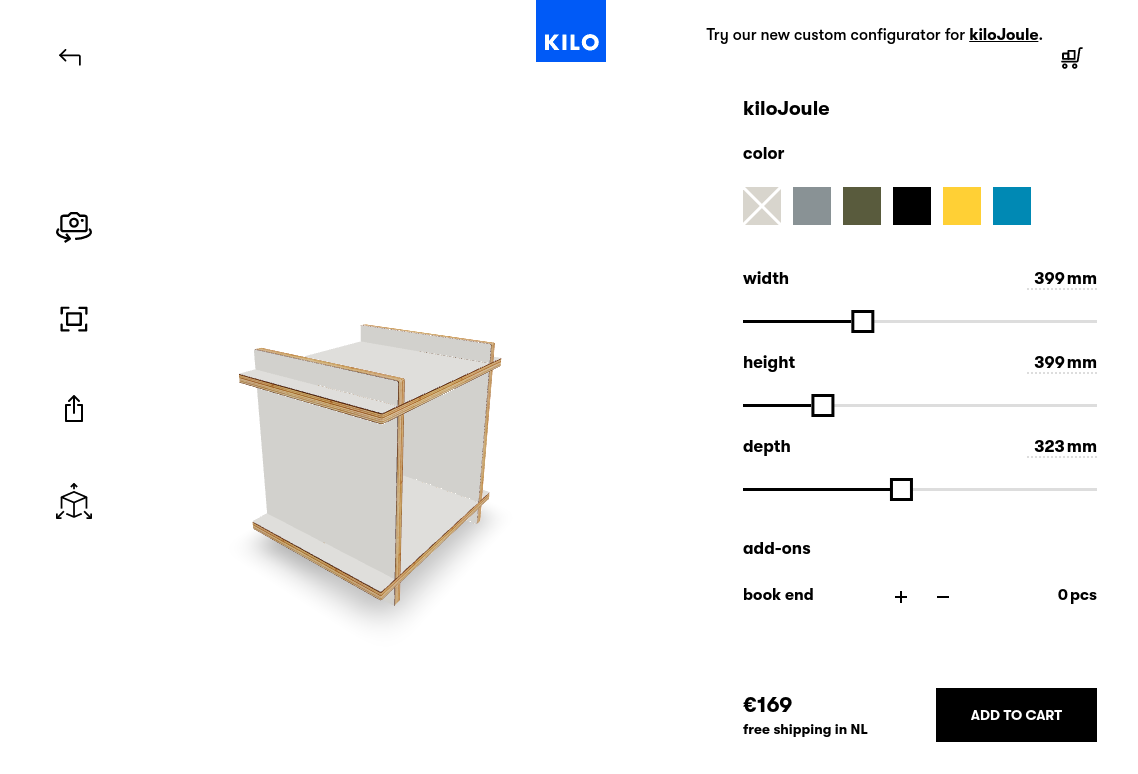Why 3D Product Configurators Are Now a Must for Retail
The fourth industrial revolution has given us a convergence of digital, biological, and physical innovations. One product innovation, which debuted in the late 90s, but has gained more popularity within the last few years, is the product configurator—more specifically, the 3D product configurator.

Each industrial revolution, from the advent of mechanization and the development of energy sources, to the rise of electronics and computers, has brought innovation to mankind. The latest industrial revolution, however, has shown us first-hand how much technology shapes our lives and how quickly it can evolve.
The fourth industrial revolution has given us a convergence of digital, biological, and physical innovations. One product innovation, which debuted in the late 90s, but has gained more popularity within the last few years, is the product configurator—more specifically, the 3D product configurator.
Go Configure
A product configurator is a digital app that can be used on websites and mobile devices by different users to “configure” or build their perfect product. Configurators give customers a visual interface where they can change various attributes (color, material, accessories) and view a fully personalized product designed to their specifications.
One of the first companies to utilize a configurator was Nike. In 1999, they came out with their NikeID. It has since been rebranded as “Nike By You” and it enables online shoppers to customize clothing and footwear purchased from Nike.
Other big-name brands, such as Tesla and IKEA, have taken advantage of offering customization to their customers. But product configurators aren’t just for top companies. There are tons of midsize companies who have made good use of a 3D product configurator.
The types of products that can be configured are virtually limitless: watches, shoes, and clothing to pools, cars, and yachts. The customization gauntlet has been thrown down and retail companies of all sizes need to act now.
What’s Driving the Configurator Revolution?
There have been a lot of contributing factors to the rise of configurators over the last few years, but I will focus on on these four:
COVID-19
Obviously COVID-19 and the subsequent quarantine restrictions have been a burden for all of us. However, there are some good things that have come out of this pandemic. Apart from knowing that distance learning and working is possible, people have come up with other creative solutions to make the hardships of everyday life bearable again. The popularization of product visualizers is one of them.
By allowing shoppers to customize products through a retailer’s e-shop, they are given the feeling of browsing multiple products at once, like they would in a physical store. And, when you add augmented and virtual reality into the mix, shopping from home becomes even more convenient.
Another challenge that retailers faced was reducing face-to-face interactions. This meant creating ways for people to shop, pay, and just be around people without actually interacting with people. Ideas like contactless payments and non-face-to-face technology have helped make things feel a bit more sufferable.
Digital transformation
Customizing a product isn’t the only part of the online shopping experience that has changed. Retailers who want to stay ahead of their competitors have implemented a unified commerce strategy. This is a single, fully integrated software platform that manages all the different systems that a retailer uses to conduct business, from one interface.
For shoppers, having the buying process streamlined and the use of AI-driven chat bots to help deliver 24/7 customer service have also made it easier.
For retailers, technology like machine learning and predictive analytics give them valuable insights into what their customers—both in-store and online—want. According to Hitachi Solutions, “Machine learning data enables retailers to identify shopping patterns, understand buying behaviors, adjust promotions and special offers, personalize product recommendations, tweak pricing on the fly, and create forecasts based on historical trends and customer preferences.”
Direct-to-Consumer (DTC) challenges
Over the last decade there has been an increased investment in customer data. Knowing a consumer’s habits, location, and past purchases is a gold mine for online retailers. But you’re not the only enterprise doing this. An increase in competition has been one of the biggest hurdles for a company’s online strategy, especially within the last two years.
Product differentiation, personalization, and distribution are other challenges that retailers face while expanding their brand to a wider online audience.
Modern manufacturing techniques
A huge contributor to the configurator revolution has been modern manufacturing technology. It’s one thing to offer product configuration for pre-fabricated products, but the advent of companies that can custom-make the entire product structure is a relatively new development.
The ability to change the color, material, or add-ons is great, but there are companies who utilize 3D printers and CNC machines, allowing far more flexibility. For example, you might be able to scale the product’s size.
KILO, an Amsterdam-based furniture brand, uses a CNC machine to offer fully customized furniture pieces. Aside from choosing the color, buyers can change the size to best fit their needs. KILO’s CNC machine can make precise adjustments down to the millimetre. For further information, read their story and the case study we wrote about them.

It’s Happening Now
As I mentioned before, companies of all sizes are getting on the product customizer bandwagon. If you’re still unsure, here are some statistics about 3D product configurators to mull over:
- $5.6 billion: the projected market size of 3D rendering in 2023
- 11x increase in likelihood to purchase
- 22% of all purchases will be made online in 2023
- 35% reduction in rate of product returns
- 66% higher conversions than those earned by 2D solutions
- 82% of product page visitors choose to activate 3D view
Where to Begin?
Before you jump in with both feet, it’s vital to get some research under your belt. Start digging around and see what you unearth. The great thing about 3D product configurators is that you can try them out online. Get a feel for how they work, interact, and where they are in the buying process.
There are also tons of 3D printing companies you can interact with through social media. Start asking questions, attend webinars, take surveys, book demos, and do market research. You can see if there is a market for customizing your product online and if any other company is already doing it.
The other thing you can do is to contact an agency who has already built some 3D product configurators, which is where Salsita comes in.
How Salsita Can Help
Salsita has been in the configurator space for a couple of years now. We have case studies and articles to read or webinars and videos to watch. But, honestly, the best way to find out what we can do for you is to just contact us.
We can book a demo for you and explain how we can build you a 3D product configurator that will boost your online revenues and increase customer satisfaction. We love working with emerging technologies and we don’t run from creative challenges. We have carved out a unique space with our 3D product configurator framework and we want you to be a part of it. Some companies that have come along for the ride so far are KILO and L’Atelier Haute Design.
We are ready to connect and answer any questions you have. Let’s go!

